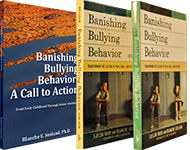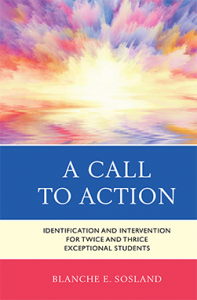The National Education Association estimates that every seven minutes of every school day, a child is the victim of bullying, and 85% of the time there is no intervention by other students or adults. Over 280,000 students are physically attacked each month at high schools. One third of all students say they’ve heard another student threaten to kill someone. One in five reports they know someone who brought a gun to school. Yet, many teachers and school administrators tend to underestimate the problem, which peaks in middle school.
Why do you think bullying peaks in middle school? Why do you think teachers and school administrators tend to underestimate the problem?
Give three reasons why bullying should be considered peer abuse.
Based on their bullying prevention work over these many years, Fried and Sosland maintain that bullying is a form of child abuse – peer abuse. If a child is hurting, it doesn’t matter if the perpetrator is a parent or a peer. If a child is suffering, it doesn’t matter if the source of the pain is someone who is thirty-five or twelve years of age. No child deserves to be abused – by anyone.
Sexting
Studies indicate that 20% of teens admit to participating in sexting, though sending such pictures is illegal. An Assemblywoman, Pam Lampitt, of Camden, New Jersey is sponsoring legislation that would give teens an opportunity to avoid prosecution for first-time offenses by completing a diversionary program. Lampitt, wants to teach teens the potential consequences of their actions without giving them a permanent criminal record. “We need to create a path that puts education and forgiveness before arrest and prosecution, “ says Lampitt.
Do you agree with Assemblywoman Lampitt’s legislation? If so, why, if not why not?
Discuss at least five steps that should be taken to prevent and remediate bullying.
At a meeting of the American Bar Association House of Delegates in February, 2011, a Resolution was passed that urges federal, state, tribal, territorial, and local officials to prevent and remediate the existence and dangers of bullying, including cyberbullying, and youth-to-youth sexual and physical harassment. The Resolution continues with numerous steps to be taken for the prevention and effective intervention of bullying.
Discuss at least three reasons why you think sibling bullying is more of a problem than peer bullying?
When students are asked, “Which troubles you the most – sibling bullying or peer bullying?” many students say that sibling bullying is more hopeless because the “bullier” is never going to move away or be expelled. If a parent prefers one sibling over another or if an older sibling is given authority, such as babysitting, and uses that power to torment freely, with threats of retaliation if the victimized sibling reports the abuse, they have no recourse. Concerned responses from students, professionals and parents are convincing evidence that this issue bears more study and clearly, more action.
Discuss three reasons that may have led researchers to conclude that the sibling relationships was the most violent of human relationships.
David Finkelhor, a sociologist at the University of New Hampshire, reported that 35% of children had been hit or attacked by a sibling in the previous year. Vernon Wiehe, author and researcher claims that 53 out of every 100 children abuse siblings. Murray Strauss, an esteemed sociologist and researcher in the field of family violence, concluded that the sibling relationship was the most violent of human bonds – more than physical abuse of parents to children or husbands to spouses.



